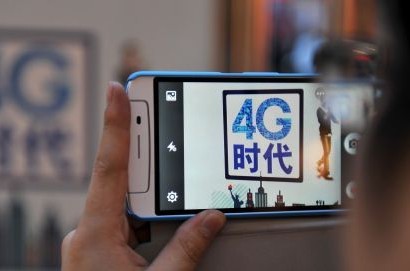Previously, China Mobile had always emphasized the five-mode ten-frequency mobile phone terminal, but last year, it said that it would introduce a three-mode eight-frequency mobile phone terminal. As a result, the policy has changed back in less than half a year. At present, only one company of Qualcomm supports the five-mode ten-frequency mobile terminal solution. Is this the rhythm of Qualcomm and eating alone?
China Mobile’s policy on 4G terminals has been repeated. Recently, China Mobile has revised the "White Paper for China Mobile Customized Terminal Products". It is clear that since May 31, 2014, its 4G custom mobile phones will all support five-mode ten-frequency. China Mobile requires mobile phone manufacturers to abandon the three-mode eight-frequency launch of the five-mode ten-frequency, which will inevitably lead to rising mobile phone costs.
Previously, China Mobile had always emphasized the five-mode ten-frequency mobile phone terminal, but last year, it said that it would introduce a three-mode eight-frequency mobile phone terminal. As a result, the policy has changed back in less than half a year.
The repetition of this policy has had a significant impact on mobile phone terminal manufacturers. Many industry insiders said that only one Qualcomm company supports the five-mode ten-frequency mobile terminal solution. If the mobile phone manufacturer abandons the three-mode eight-frequency launch of the five-mode ten-frequency, it will inevitably lead to an increase in the cost of mobile phones, which may affect the development of China Mobile. The goal of selling 100 million 4G terminals in 2014.

4G terminal policy repeated
Recently, China Mobile updated the white paper of TD customized terminal products, and put forward new requirements for customized terminals such as NFC and LTE mobile phones. Since the first round of LTE mobile phones sent from May 31, 2014, it is necessary to support five models, namely 4G. Modes TD-LTE and FDD-LTE, 3G two modes TD-SCDMA and WCDMA and 2G one mode GSM.
In fact, from the beginning of last year to the third quarter, China Mobile has repeatedly emphasized the development strategy of 5G and 10F terminals. At the end of last year, China Mobile's 4G terminal made another major adjustment, indicating the introduction of three-mode eight-band mobile terminal. But now, just three months after the time, China Mobile has reinstated its terminal policy.
Previously, China Mobile's 4G terminal strategy requirement was that mobile terminals below 2,000 yuan only need to support three-mode eight-frequency, and more than 2,000 yuan require support for five-mode. The new requirement this time is that all price phones are across the board and support five-mode ten-frequency.
Liu Qilong, deputy general manager of Longqi Holdings, revealed that China Mobile will stop the terminal cost subsidy and telephone subsidy for the three-mode eight-frequency, and the commission subsidy for social sales channels has not stopped. That is to say, China Mobile encourages social sales channels to sell three models. Eight-band bare metal, but consumers can't enjoy the previous call subsidies, and they can't buy such contract machines.
Yesterday (March 12), China Mobile said that China Mobile requires 4G custom mobile phones to support the five models, in order to further accelerate the development of 4G, promote China's leading 4G to the world, to meet customers "one machine in hand, travel all over the world" International roaming needs. China Mobile also said that this five-mode demand change is only for its 4G customized mobile phones. For non-customized three-mode mobile phones, China Mobile will develop in a market-oriented manner and provide certain channel incentive policies.
In this regard, telecom industry insider and well-known writer Shang Xiaopu said that the cost of China Mobile's three-mode 4G mobile phone is relatively low, but the life cycle of such mobile phone market is short and easy to eliminate, which is not conducive to the integration with FDD mode, five-mode 4G mobile phone. It will be the mainstream of the future, which will not only benefit international roaming, but also help virtual operators to build and share in channel expansion.
Technical vacancies are under pressure
It is not easy to achieve five-mode and ten-frequency, and its high-tech requirements will keep most of the chip manufacturers out. In the second quarter of last year, China Mobile purchased the first batch of 160,000 TD-LTE terminals and adhered to the single-chip five-mode and ten-frequency, which allowed Qualcomm, which has the technological advantage, to occupy 80% of the total. This incident has also caused great controversy in the industry.
Nowadays, China Mobile has changed the three-mode to five-mode again to let domestic manufacturers bear a lot of pressure. From the three-mode to the five-mode, due to the small number of optional chip manufacturers and programs, the increase in the cost of patents directly leads to an increase in the factory cost of mobile terminals.
The pin refers to the connection between the internal circuit of the integrated circuit (chip) and the peripheral circuit, and the pin constitutes the interface of the chip. According to the function, the pins of AT89S52 can be divided into four categories: main power supply, external crystal oscillator or oscillator, multi-function I/O port, and control, strobe and reset.
Terminal Pins,Terminal Hardware Pin,High Precision Terminal Pins,Terminal Pins For Pcb
Sichuan Xinlian electronic science and technology Company , https://www.sztmlch.com